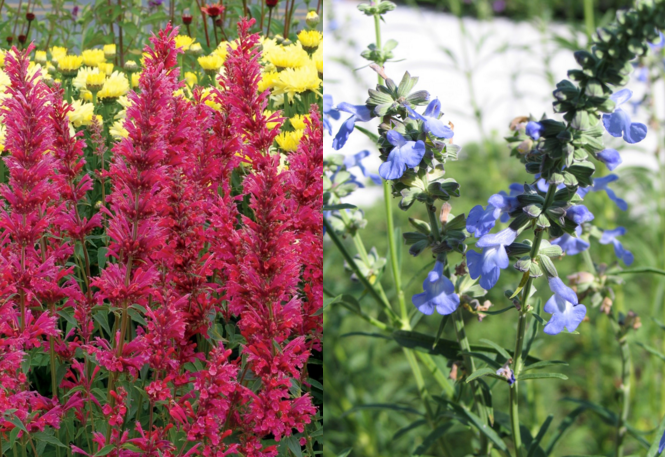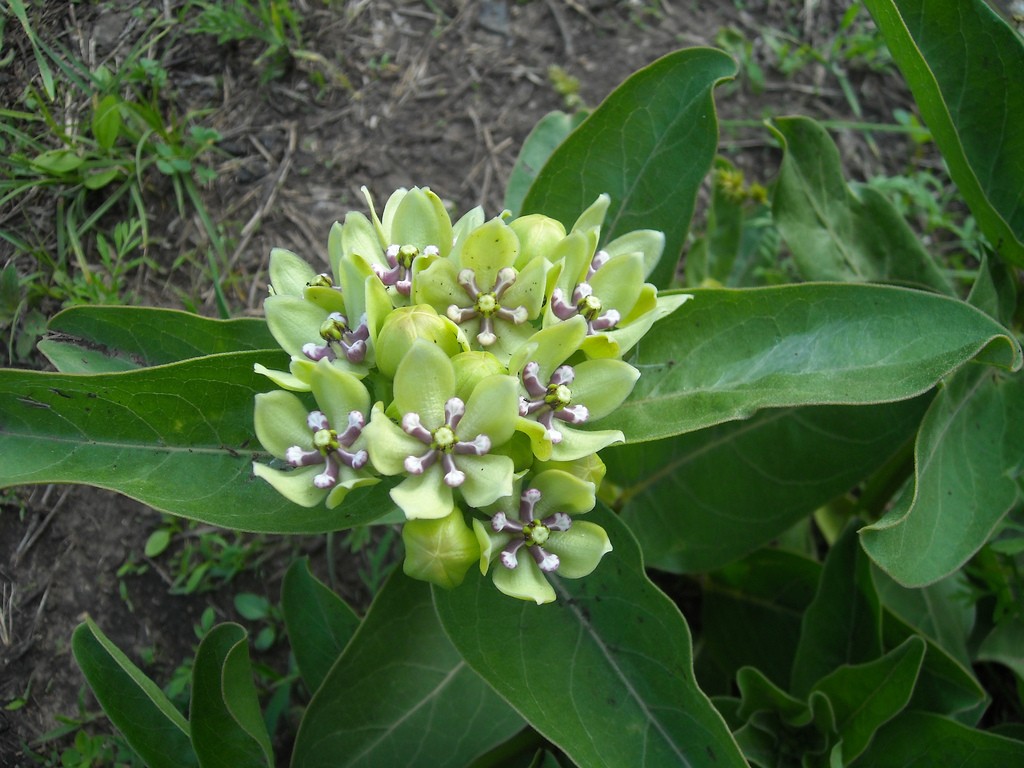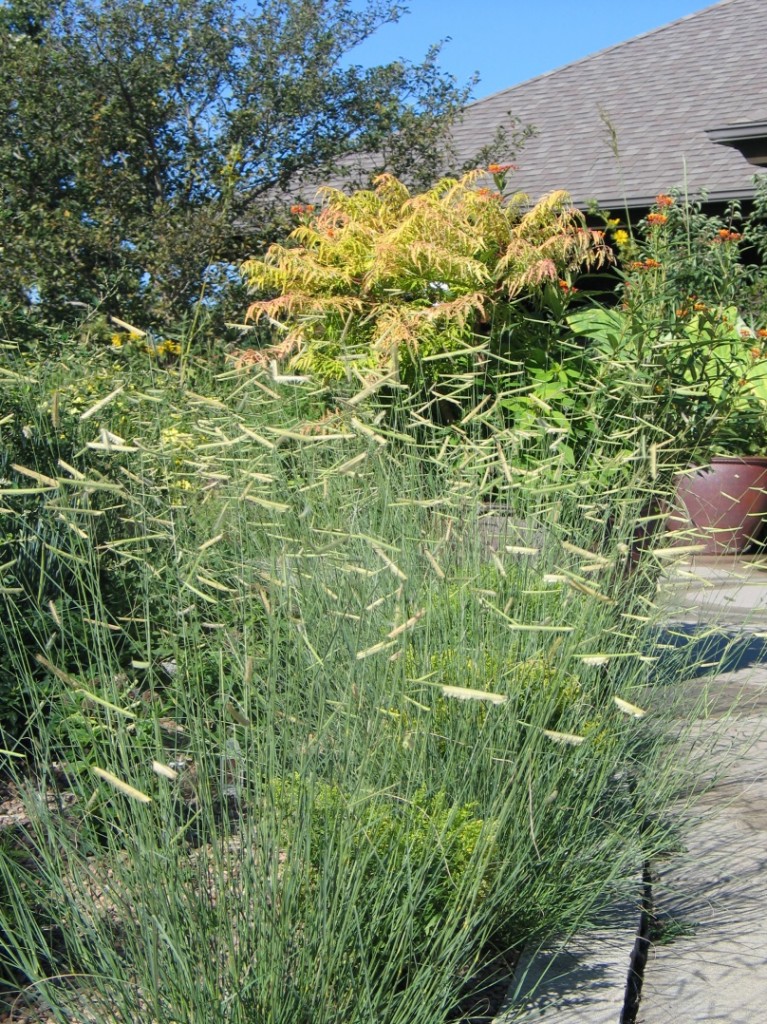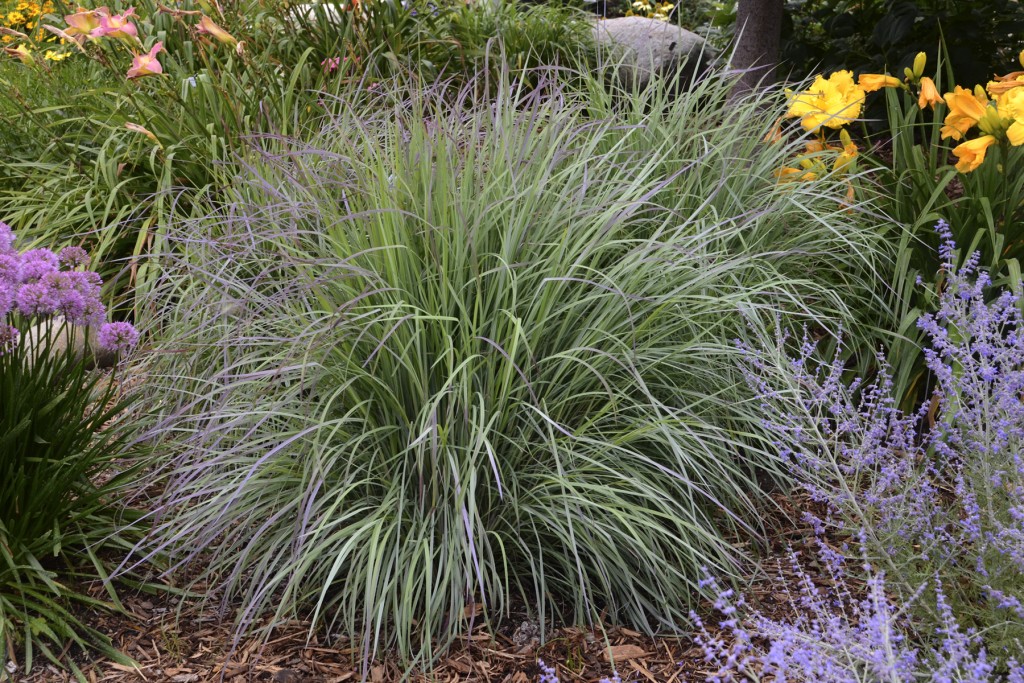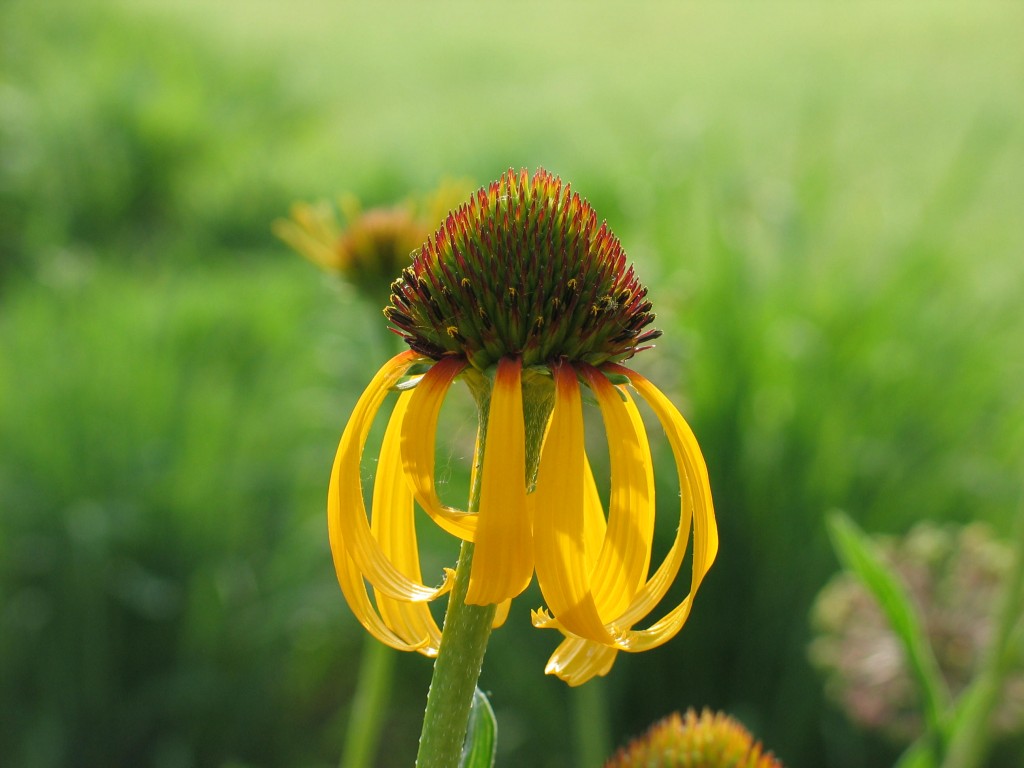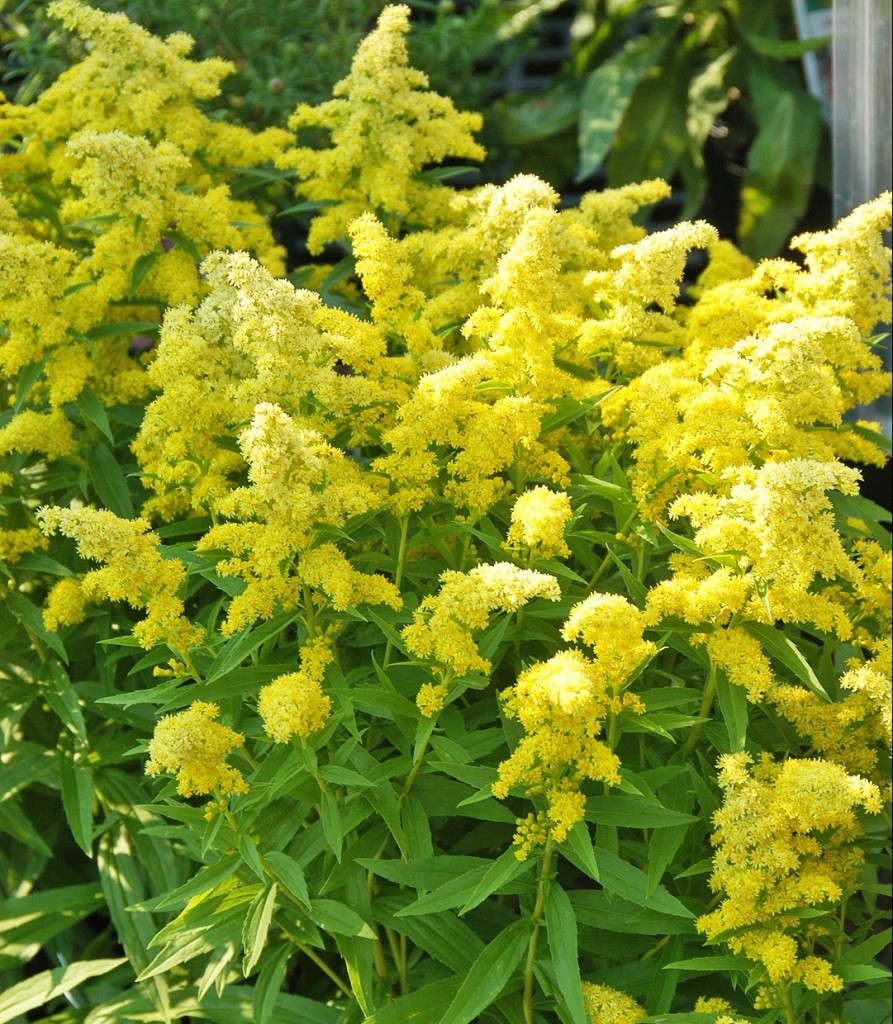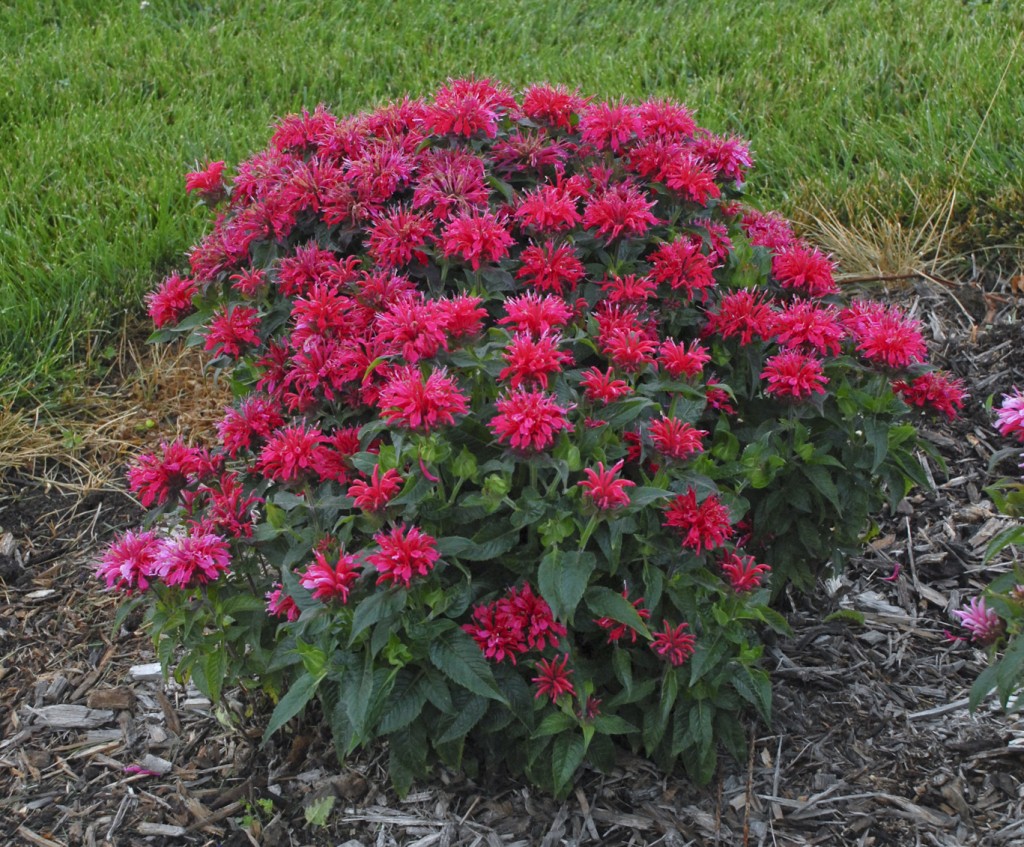Working in the Arboretum greenhouse is a terrible temptation. I love my perennial garden at home and I never stop adding new specimens, so our selection of natives and adaptables this year is a treasure trove for me. I must truly exercise some self control to prevent my entire paycheck from turning into wildflowers. Until I win the lottery or inherit a rich uncle’s fortune, I will have to just pick a few favorites!
If you, like me, have a fond eye for every flower, then it may be helpful to guide your shopping this year by selecting a plant family to collect. Researching a scientific plant family and finding those species native to your area can help lend a theme to your garden, add cohesiveness, and curtail your wild garden spirit.
This year I am going to plant from the mint family, Lamiaceae, or formerly, Labiatae. Lucky for me, our upcoming sale has lots of gorgeous options!

A red variety of bee balm shown with solidago (Left) and a light purple Monarda fistulosa (Right). Bee balm is part of the mint family.
Family Traits
Lamiaceae (lame-ee-ay-see-ee or lame-ee-ay-see-ii) is a large plant family with of over 3500 species. In science lingo, families are groupings of plant genera – a fancy way to say that these plants share common traits. A tell-tale sign of a mint family member is a strong aroma from the leaves, be it traditionally minty or not. These plants are some of the most valuable aromatic, culinary and medicinal crops in the world – rosemary, oregano, thyme, basil, salvia, hyssop, bee balm, and lavender are all a part of this big family.
Mint family plants commonly have square stems and flowers with bilateral symmetry (top and bottom do not match but sides mirror each other). The pictures in this post will hopefully help you to recognize some of the common traits shared among the mint family, and soon you will be identifying mint family species on your own!
Following are my top mint family picks from our plant sale, along with a list of varieties available.
My Plant Picks
One of my top picks from the mint family is agastache, commonly known as hyssop or hummingbird mint. It thrives in sun and heat and its leaves emanate a wonderfully minty scent. Its tubular flowers attract hummingbirds to the garden. We are offering it in yellow, orange, blue, violet, and pink – perfect for whatever color combination you can dream up! Blooming from early summer to late fall, agastache is a showstopper year after year in the landscape.
A. foeniculum – Agastache ‘Kudos Yellow’ ‘Kudos Coral’ ‘Raspberry Summer’ ‘Summer Sunset’
‘Summer Love’ ‘Blue Boa’ ‘Violet Visions’
Salvia is another sun loving flower that I will be adding to my garden this year. Pictured above is a native variety, growing as tall as 5 feet in the right conditions. Salvias come in all shapes and sizes; mound forming, tall and showy, wispy, etc., and many different colors. Their long flowering spikes add nice movement in the breezy garden and are beloved by butterflies. The sale will have saturated deep blues and magenta available, as well as lighter tones, pink and lavender.
S. azurea ‘Grandiflora’ – S. pitcherii ‘Nekan’ – S. greggii ‘ Furman’s Red’ ‘Ultra Violet’ – S. nemerosa Violet Riot’ ‘Pink Dawn’ ‘Crystal Blue’ ‘Caradonna’ – S. macrophylla ‘Hot Lips’ ‘Windwalker Royal Red’
If you love the smell of Earl Grey tea then monarda is for you! Commonly called bee balm or wild bergamot (because of its similar fragrance to Citrus bergamia, source of earl grey tea), the leaves of this plant release their pleasant aroma every time you water or brush past. This year we are offering many different varieties of monarda, some native and others hybridized, in various shades of red and purple.
M. fistulosa – M. didyma ‘Pardon My Pink’ ‘Pardon My Purple’ ‘Pardon My Cerise’ ‘Leading Lady Plum’ ‘Grape Gumball’ ‘Lilac Lolipop ‘ ‘Cotton Candy’ ‘Cherry Pops’ ‘Rockin Raspberry’
It’s hard to only pick a few when we have so many ‘minty’ options! More than just the three discussed here, we also have catmint (Nepeta sp.), Russian sage (Perovskia atriplicifolia) and lavender (Lavendula ‘Phenomenol’), and many more. If you come to the sale, you know where to find me – hovering near the mint family plants, sniffing away!
Some information fact checked at http://delta-intkey.com/angio/www/labiatae.htm
Photos from Dyck Arboretum archives and Walter’s Gardens media resources.

